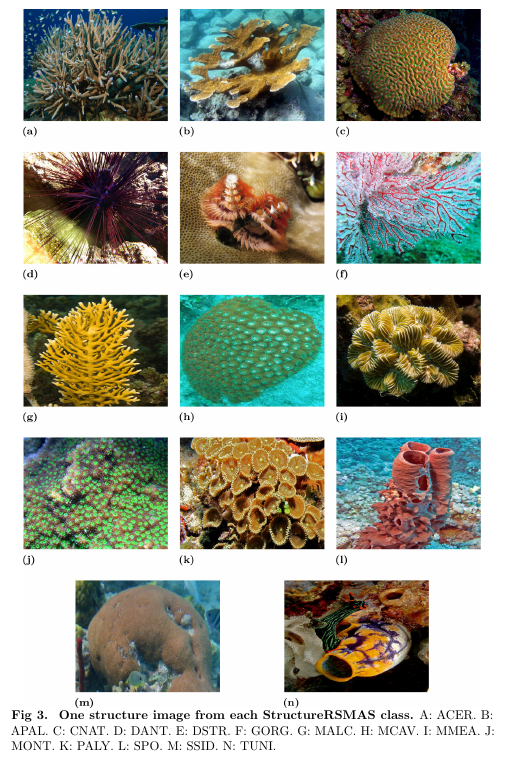Coral species identification with texture or structure images using a two-level classifier based on Convolutional Neural Networks
This website contains complementary material to the paper:
Anabel Gómez-Ríos, Siham Tabik, Julián Luengo, ASM Shihavuddin and Francisco Herrera, Coral species identification with texture or structure images using a two-level classifier based on Convolutional Neural Networks.
The web is organized as follows:
1. Abstract
2. Description of the new dataset
3. Dataset
Abstract
Corals are crucial animals as they support a large part of marine life. The automatic classification of corals species based on underwater images is important as it can help experts to track corals easily and to detect threatened and vulnerable species. However, this classification is complicated due to the nature of coral underwater images and the fact that current underwater coral datasets are unrealistic as they contain only texture images, while the images taken by autonomous underwater vehicles show the complete coral structure. The objective of this paper is two-fold. The first is to build a dataset that is representative of the problem of classifying underwater coral images, the StructureRSMAS dataset. The second is to build a classifier capable of resolving the real problem of classifying corals, based either on texture or structure images. We have achieved this by using a two-level classifier composed of three ResNet models. The first level recognizes whether the input image is a texture or a structure image. Then, the second level identifies the coral species. To do this, we have used a known texture dataset, RSMAS, and StructureRSMAS.
Description of the new dataset
Typical coral pictures often capture the whole coral body and structure and do not focus only on the texture of its parts. An ideal classifier should be able to recognize the coral based either on its texture or structure and with images taken under different conditions, cameras, etc. To develop such a model we need images that show both texture and structure of the coral species. We have considered RSMAS as texture dataset and we have built a new dataset, StructureRSMAS, using structure coral images of the same coral species, downloaded from official scientific websites, e.g., the Encyclopedia of Life, the IUCN Red List of Threatened Species or the coralpedia of the University of Warwick. Few images were available per class.
StructureRSMAS contains 409 coral images of variable size but larger than the ones in RSMAS. The images were taken with different cameras at different times and places and under different conditions. The next Figure contains some examples of this dataset.

Dataset
StructureRSMAS, along with a list of the sources of the images, can be downloaded in the following link. Some images are copyrighted by their respective owners and are shared here for research purposes: ![]()
